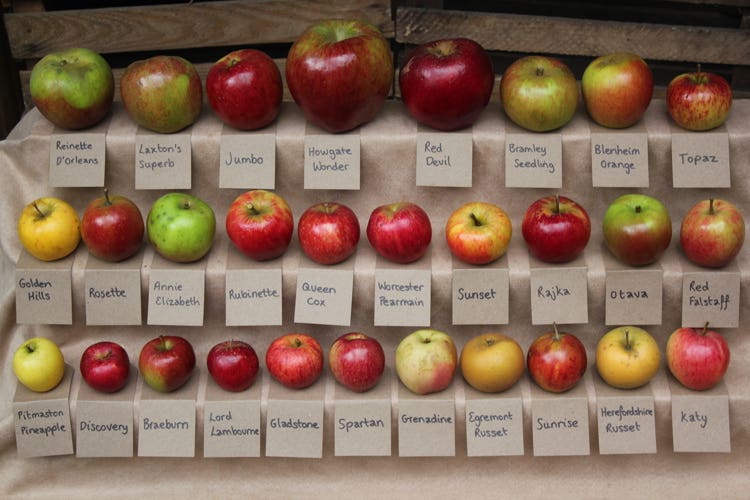Fiber-rich diet improves gut health and fights infections
Discover how gut microbiome dynamics and diet influence Enterobacteriaceae colonization, offering new strategies to combat antibiotic-resistant pathogens.

A global study unveils how diet shapes gut microbiome interactions, influencing Enterobacteriaceae colonization and offering alternatives to antibiotics. (CREDIT: CC BY-SA 4.0)
The human gut microbiome—a dense and diverse ecosystem of microorganisms—plays a critical role in overall health. It aids in digestion, regulates immunity, and even provides resistance to harmful pathogens.
However, disruptions to this microbial balance can create opportunities for disease-causing bacteria, including members of the Enterobacteriaceae family, to proliferate. These pathogens, such as Escherichia coli and Klebsiella pneumoniae, are known to cause severe infections and contribute to global health challenges like antibiotic resistance.
Recent research, involving the metagenomic analysis of over 12,000 gut microbiome samples from 45 countries, provides new insights into how the microbiome interacts with Enterobacteriaceae. This study highlights the factors that influence their colonization and suggests dietary strategies to mitigate the risks they pose.
The study, published in Nature Microbiology, identified 307 gut microbial species significantly associated with Enterobacteriaceae colonization. Of these, 172 species were classified as co-colonizers, thriving alongside Enterobacteriaceae, while 135 were co-excluders, which tend to inhibit their growth.
Species from the Faecalibacterium genus emerged as notable co-excluders, producing short-chain fatty acids (SCFAs) that create an inhospitable environment for Enterobacteriaceae.
Dr. Alexandre Almeida, senior author of the study from the University of Cambridge, explained the protective role of SCFAs: “By eating fiber in foods like vegetables, beans, and whole grains, we can provide the raw material for our gut bacteria to produce SCFAs—compounds that can protect us from these pathogenic bugs.”
In contrast, co-colonizers like Veillonella and Enterococcus species appear to support the growth of Enterobacteriaceae. For example, Enterococcus faecalis facilitates E. coli proliferation through the production of specific metabolites. Understanding these microbial interactions could pave the way for targeted therapies to maintain a healthy gut microbiome.
Diet emerges as a key factor in shaping the gut environment. A fiber-rich diet not only supports beneficial bacteria like Faecalibacterium but also reduces the risk of Enterobacteriaceae overgrowth.
The study’s findings challenge the efficacy of probiotics, which often fail to alter the gut environment significantly. Instead, dietary interventions that promote beneficial microbial activity show more promise in preventing infections.
Dr. Almeida emphasized the role of diet in infection prevention: “Our results suggest that what we eat is potentially very important in controlling the likelihood of infection with a range of bacteria, including E. coli and Klebsiella pneumoniae. This changes our gut environment to make it more hostile to invaders.”
Related Stories
The implications extend beyond individual health. By promoting a healthy gut microbiome through diet, communities could reduce the spread of antibiotic-resistant pathogens. Public health campaigns encouraging fiber-rich diets could serve as a proactive measure to curb the global rise of infections caused by multidrug-resistant bacteria.
The study’s global scope revealed intriguing geographic patterns in Enterobacteriaceae colonization. For instance, co-colonization of E. coli and K. pneumoniae was more common in samples from Asia, while strains of Enterobacter hormaechei were prevalent in Africa and Oceania. These variations likely reflect differences in diet, lifestyle, and healthcare practices across regions.
Further analysis uncovered significant strain-level diversity within Enterobacteriaceae species. Among the 5,128 samples from healthy adults, researchers identified 585 distinct E. coli sequence types, many of which had not been previously characterized. This genetic diversity highlights the need for more comprehensive reference databases to fully understand the global diversity of gut bacteria.
Moreover, the study identified that certain strains, such as those from the Faecalimonas phoceensis species, exhibited strong associations with Enterobacteriaceae colonization. This strain-specific relationship suggests that targeted microbial therapies could be developed to influence colonization patterns.
These findings underscore the need for continued investment in metagenomic technologies and large-scale studies to map the human microbiome’s complexity.
The findings also have profound implications for managing antibiotic-resistant Enterobacteriaceae. Multidrug-resistant strains of K. pneumoniae and E. coli have become a major global health concern, with fewer treatment options available. Preventing these infections through dietary interventions offers a promising alternative.
“With higher rates of antibiotic resistance, there are fewer treatment options available to us. The best approach now is to prevent infections occurring in the first place by reducing opportunities for these disease-causing bacteria to thrive in our gut,” said Dr. Almeida.
The study’s machine learning models further underscore the importance of a healthy microbiome. These models, trained on microbial signatures from diverse populations, accurately predicted Enterobacteriaceae colonization based on the presence of other gut microbes. This predictive capability could help identify individuals at higher risk of infection and guide personalized dietary or therapeutic interventions.
Additionally, the models demonstrated generalizability across different geographic regions. For example, models trained on samples from Asia, Europe, or North America performed well when applied to other continents.
This suggests that despite regional variations, certain microbial signatures linked to Enterobacteriaceae colonization are globally consistent. Such tools could be integrated into public health strategies to monitor and manage microbiome health at both individual and population levels.
As researchers continue to uncover the intricate dynamics of the gut microbiome, the potential for non-antibiotic therapies grows. For example, microbiome-derived therapeutics, such as those used to treat Clostridioides difficile infections, could be adapted to target Enterobacteriaceae. These therapies leverage beneficial bacteria and their functions to restore microbial balance and prevent pathogen colonization.
Dr. Qi Yin, the study’s lead author, noted the importance of this holistic approach: “This study highlights the importance of studying pathogens not as isolated entities, but in the context of their surrounding gut microbiome.”
The study’s revelations also challenge some previous assumptions about gut microbial interactions. Earlier research suggested that competition for resources among microbes would limit the growth of pathogenic bacteria.
However, the discovery of 172 co-colonizing species indicates a more complex interplay, where certain microbes facilitate pathogen survival. This nuanced understanding emphasizes the need for interventions that modify the gut environment itself rather than merely introducing competing microbes.
Preventive strategies should also consider the role of environmental factors, such as sanitation and healthcare practices, in shaping microbiome composition. Addressing these broader determinants, alongside promoting dietary changes, could amplify efforts to control pathogen colonization.
The path forward lies in integrating dietary strategies, microbiome-based therapies, and advanced genomic tools to combat the growing threat of antibiotic-resistant pathogens. By fostering a deeper understanding of the gut’s microbial ecosystem, scientists aim to develop sustainable solutions for global health challenges.
With continued research and public health initiatives, the promise of a healthier gut microbiome is within reach for individuals and communities alike.
Note: Materials provided above by The Brighter Side of News. Content may be edited for style and length.
Like these kind of feel good stories? Get The Brighter Side of News' newsletter.
Rebecca Shavit
Science & Technology Journalist | Innovation Storyteller
Based in Los Angeles, Rebecca Shavit is a dedicated science and technology journalist who writes for The Brighter Side of News, an online publication committed to highlighting positive and transformative stories from around the world. With a passion for uncovering groundbreaking discoveries and innovations, she brings to light the scientific advancements shaping a better future. Her reporting spans a wide range of topics, from cutting-edge medical breakthroughs and artificial intelligence to green technology and space exploration. With a keen ability to translate complex concepts into engaging and accessible stories, she makes science and innovation relatable to a broad audience.



